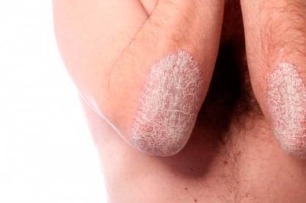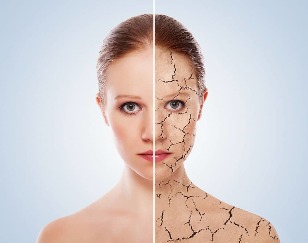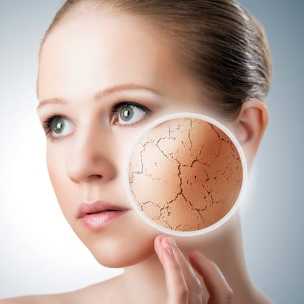
Although psoriasis is a common and well-known disease, it is still not fully understood. And most patients are unaware that psoriasis is not a bacterial infection or a fungus, but a non-standard reaction of the immune system to unknown causes. Information about the causes and symptoms of psoriasis will be very useful for patients, as it will help to eliminate the disease.
What is this?
Lichen scales are another name for psoriasis, and this name perfectly describes the disease. Psoriasis manifests itself in the formation of inflammatory plaques of various sizes on the skin, densely covered with thick skin scales.
Undoubtedly, almost everyone has heard of a disease like psoriasis. And this is not surprising, because the paid lichen is quite widespread. The disease is diagnosed in 4-10% of the world's population. In addition, statistics on the spread of psoriasis claim that the number of patients is constantly growing.
Paid lichen has been known to people since ancient times, and even healers in ancient Greece tried to cure this disease. The modern history of psoriasis research is about 150 years old. However, during this important period, researchers have not been able to obtain sufficient information about the causes and treatment of psoriasis.
Widespread, uncertain etiology (causes), quite effective treatment - all this characterizes psoriasis as one of the most difficult problems in dermatology.
Today, dermatologists consider psoriasis as a complex systemic disease associated with disorders of the immune system with disorders of metabolic processes and the appearance of trophic diseases. These failures result in specific skin changes.
Therefore, when answering the question of what psoriasis is, a modern dermatologist will answer that it is trophism and metabolic disorders in the skin caused by a malfunction of the body's systems. Today, two theories regarding the etiology of psoriasis are most likely: genetic and viral.- There are many proponents of genetic theory, because psoriasis often plays the role of hereditary or familial dermatosis. Careful examination of the patient's family history in 60-80% confirms that the patient has psoriasis in one form or another. However, it is not possible to confirm the hereditary origin of psoriasis in some patients. This leads to the division of these cases into a special group, where the main cause is not genetic, but phenotypic failures.
- There are proponents of the virus theory that psoriasis develops as a result of infection. Confirmation of information about the viral origin of psoriasis is the detection of antibodies in the blood of patients, as well as "elemental bodies" in the cells of the epidermis. According to this theory, psoriasis develops not only when infected with a virus, but also under certain conditions.
There are other theories that explain psoriasis. For example, endocrine, neurogenic, metabolic, etc. Of course, not all of these theories are unfounded, and their study will provide more important information about psoriasis. However, it is now known that the condition of the endocrine and nervous systems and the functioning of the gastrointestinal tract do not cause psoriasis, but have a significant impact on the course of the disease.
For example, pathologies affecting the liver cause a significant reduction in the quality of blood purification performed by this organ. And this, in turn, can provoke the appearance of various skin conditions, including psoriasis.

Pathologies affecting the liver (hepatitis, primary cirrhosis, etc. ) lead to the rebirth of the tissues of this organ, ie the gradual replacement of the liver with connective tissue. As a result, the liver ceases to cope with its cleansing functions. Externally, it manifests itself in yellowing of the mucous membranes and skin, and the development of skin diseases, including psoriasis, is possible.
There is also an inverse relationship, psoriasis is often accompanied by fatty degeneration affecting the liver. Therefore, in the treatment of skin diseases, it is important to follow a diet to avoid overloading the liver. Patients are advised to limit fatty foods and completely eliminate alcohol.
Thus, despite numerous studies, it has not been possible to get a definitive answer to the question of what psoriasis is. However, the work continues, so there is a chance to unravel the mystery of this mysterious disease, and we will learn a lot about psoriasis.
International Classification
Psoriasis manifests itself in various forms. To make it easier for professionals to navigate, a generally accepted classification of psoriasis is used.
Psoriasis has been added to the International Classification of Diseases (ICD). To date, the International Register of Diseases already uses 10 revisions, so the acronym ICD 10 is used. Work began on 10 revisions of the International Classification of Diseases in 1983 and was completed in 1987.
In fact, ICD 10 is a standard assessment tool used in medicine and health management. The Handbook in Revision 10 is used to track the spread of various diseases and other health problems in the population.
Using version 10 of the ICD, it is possible to compare morbidity and mortality rates in different countries, which allows to obtain statistics and systematize diagnostic data. With the consent of WHO members, ICD 10 is used to code for various diseases. Version 10 of the classifier adopts alphanumeric codes that are convenient for storing data in electronic form.
Each type of psoriasis is included in the ICD 10 and each is given a specific code. In dermatology, the following forms and types of psoriasis are selected:
- Common psoriasis(synonyms: vulgar, simple, plaque-like). The disease ICD 10 - L-40. The code is given according to 0. This is the most common form, observed in 80-90% of patients. The main symptoms are the formation of plaques raised above the surface of the skin, covered with white-gray skin scales. This form is characterized by a slight peeling of the scales. After removal, the inflamed red skin, which is easily injured and begins to bleed, opens up. As the inflammatory process progresses, the plaques may increase in size significantly.
- Reverse psoriasis. It is a disease that affects the folds (flexor surfaces) of the skin. Code L83-4 for this form of the disease was adopted in ICD 10. Dermatosis occurs with the formation of wrinkles on the skin of smooth or minimally stained spots. Deterioration is observed when the skin is damaged by friction. The disease is often complicated by an associated streptococcal infection or fungus.
- Guttate psoriasis. This form of psoriasis is characterized by the formation of numerous small spots on the skin, formed as red or purple, water droplets. According to version 10 of the International Classification, such a disease received the code L4. Often, intestinal psoriasis affects the skin of the legs, but skin can form on other parts of the body. At the same time, eye drops are known to develop as a complication of psoriasis, after streptococcal infections - pharyngitis, tonsillitis, etc.
- Pustular or exudative psoriasisis a severe skin condition identified by codes L1-3 and L 40. 82 according to ICD 10. It is characterized by the formation of blisters or pustules. The skin in the lesions is swollen, red, inflamed, easily peeled. If a fungus or bacterium penetrates the pustules, the pustules become purulent. Pustular psoriasis often affects the distal extremities, but in the most severe cases, a generalized process can develop with the spread of the rash to the body.
- Psoriatic arthritis or arthropathic psoriasis. Code L5 was assigned for version 10 of ICD pathology. It manifests itself with inflammation of the joints. Arthropathic psoriasis can affect all types of joints, but in most cases the joints in the phalanges of the fingers and hands become inflamed. Knee, hip or shoulder joints may be affected. Lesions can be so severe that they can lead to disability. Therefore, you should not think about psoriasis as it is just a skin disease. Severe forms of psoriasis can cause systemic injury, disability, or even death.
- Erythrodermic psoriasis. According to ICD 10, a rare but severe type of psoriasis, the disease received the code L85. Erythrodermic psoriasis often manifests itself in a generalized way, it can penetrate all or almost all surfaces of the skin to the affected area. The disease is accompanied by severe itching, swelling and pain.
- Onychodystrophy psoriatic or nail psoriasis. According to version 10 of the ICD, the disease was coded L86. The pathology manifests itself with changes in the appearance of the nails on the toes and hands. Nails may change color, thicken and begin to deteriorate. It is possible that the nails disappear completely.

In psoriasis, the classification of the disease takes into account not only the type of disease, but also the severity of symptoms:
- Localized psoriasis is a disease that affects less than 20% of the skin;
- widespread psoriasis affects more than 20% of the body surface;
- If almost the entire surface of the skin is affected, we are talking about universal psoriasis.
Considering all types of disease, common psoriasis is more common than other forms.
Flow Stages
Limited or widespread psoriasis goes through three stages in its course: progressive, stable and regressive.
The following are typical for the progressive stage of psoriasis:
- formation of new rashes;
- growth of already existing boards;
- appearance of new elements of rash in skin lesions (scratches, abrasions);
- Extensive scaling of existing boards.
The following symptoms are typical for the inpatient phase of psoriasis:
- no new elements appear;
- moderate peeling of elements; There are no signs of growth of
- elements.

The appearance of wrinkles in the stratum corneum around the elements is a sign of transition from the inactive phase to the regressive phase.
The regression phase is characterized by the following types of symptoms:
- decrease in peeling intensity; Solution of
- elements.
Hypo or hyperpigmented spots remain in place after the resolution of psoriatic plaques.
Paid lichen is characterized by a long way with periodic exacerbations. The following types of psoriasis are distinguished:
- winter (worsens in autumn and winter);
- summer (with aggravations in hot weather);
- Interseasonal psoriasis is the most severe type, as there is no clear link between relapses and the seasons, so remission periods may be virtually non-existent.
Diagnostic Features
If the psoriasis has a typical clinical picture, the diagnosis will not be so difficult. However, this disease is often hidden like other pathologies.
For example, nail psoriasis is often mistaken for nail fungus because the external manifestations in the early stages of these diseases are very similar. However, nail fungus and psoriasis are completely different in nature, so the treatment should be different.
A layman can mistake psoriasis and fungus like mushrooms. Because mycoses of the skin (skin fungus) manifest themselves with similar symptoms - the formation of scaly plaques. Therefore, if you see suspicious symptoms on the body or nails, you do not need to diagnose yourself and read to treat the fungus using a pharmacy or folk remedies.
If the diagnosis is wrong and the cause of the symptoms is actually a psoriasis, not a fungus, the treatment will not work and will only aggravate the symptoms.
When you contact a dermatologist, you will be tested for fungus and a nail or skin shave will be taken. The resulting material is then placed in a nutrient medium. If fungus is present in the material, a large colony will grow in the test sample after a few days. From the appearance of the material, it will be possible to understand what type of fungus is causing the infection.
Sometimes psoriasis is complicated by the addition of secondary infections, such as a bacterial infection or a fungal infection. Therefore, when the clinical picture changes (appearance of purulent discharge, discoloration of the plaques, etc. ) patients will need to be examined periodically for fungus and other infectious agents.
patients will need to be examined periodically for fungus and other infectious agents.
In the process of diagnosis, a number of events called psoriatic triad are given a certain role. When shaving the spill element, events occur sequentially.
The psoriatic trinity looks like this:
- When scraping the debris element, the scales are removed in the form of "sawdust";
- After removing the chips, a thin transparent film resembling polyethylene is opened;
- When the film is damaged, the exact bleeding begins.
A dermatologist diagnoses psoriasis, but if necessary, the doctor will refer the patient to other specialists for consultation - rheumatologist, gastroenterologist, surgeon, etc. can direct.
Interesting facts about psoriasis
People have known about psoriasis for a long time. The name of the disease came to us from the ancient Greek language. During the heyday of ancient Hellas, the word "psora" meant all skin diseases caused by peeling and itching.
The first person to write a detailed treatise on psoriasis was a Roman named Cornelius Celz. The fifth volume of De medicina contains an extensive chapter on the disease.
Psoriasis was known, but it was not unequivocally assessed as sometimes called "imperial" or "satanic" disease.
Of course, ancient physicians knew very little about psoriasis. Until the 19th century, this disease was often confused with other skin diseases. Psoriasis was first identified as an independent nosological form in 1799. This was done by British dermatologist Robert Villan, who chose psoriasis from a wide range of skin diseases caused by itching and peeling.
Psoriasis was known not only to ordinary people, but also to prominent politicians. For example, Winston Churchill, who suffered from this disease, promised to put a monument of pure gold to a man who could learn everything about psoriasis and offer an effective treatment for this disease.
Modern understanding of the disease
It should be noted that modern science does not know much about this mysterious disease. There are various theories about the origin, course and treatment of psoriasis.
Some undoubted facts about psoriasis:
- Although the causes of the disease were not clear, it was possible to learn about the nature of psoriasis. This disease is autoimmune, ie it is caused by a malfunction of the immune system;
- Another truth about psoriasis: the disease can be inherited. However, this is not always the case, and although both parents are ill, the risk of developing the disease in their child is 65%. At the same time, some patients develop psoriasis, although none of their relatives are sick;
- An interesting fact about psoriasis is that it is characterized by the Kebner phenomenon. This phenomenon manifests itself in the formation of rash elements in the areas of skin damage - scratches, burns, frostbite. Sometimes psoriasis appears at the site of the wound, after a while;
- An important observation that allows us to learn more about psoriasis is the association of this disease with climatic factors. Exacerbations and recurrences often coincide with seasonal changes;
- patients probably noticed a link between exacerbation and stress in practice. All patients should know for sure whether the disease is recurrent or worsening against the background of nervous tension and experiences;
- A new fact about psoriasis is that although it was previously believed that lichen scales occur after the age of 30, the disease can start at any age;
- It is important for all people to know that psoriasis is not a contagious disease. There is no risk of infection, even in close contact with the patient;
- Almost everyone has heard about the incurable nature of psoriasis, and this is true, because no cure has been found that will definitely defeat the disease. However, patients should know that psoriasis can be managed. Adequate and timely treatment allows for long-term remission.
Modern treatments
When talking about common psoriasis, it is impossible to talk about the treatment of this common disease. It should be noted that psoriasis can not be treated only with tablets or ointments.
In order to forget the manifestations of psoriasis for a long time, the patient should make an effort in close cooperation with the doctor. Meals need to be organized properly. Some experts claim that psoriasis can be forgotten forever only with a properly designed diet and regular cleansing of the body.
The doctor will prepare an initial scheme for treatment. As a rule, external (ointments, creams) and systematic (tablets, injections) therapies are used. In addition, physiotherapy methods will be used and spa treatment will be recommended. It is recommended to use psoriasis treatment mud, mineral and thermal water.
Recreation centers may also offer non-traditional treatments. For example, with the help of fish living in thermal springs. These little healers effectively cleanse dead skin scales and disinfect the skin and promote its healing as soon as possible.
Resorts may offer other treatments for paid lichen. For example, leech therapy, healing baths and applications, sun therapy, etc.
You should be prepared for the fact that the treatment regimen will change from time to time. Because not all methods are suitable for a particular patient. If the selected treatments do not work, they need to be replaced.
Popular treatments for psoriasis are also widely advertised. Indeed, some of them may achieve remission. However, when choosing a method, you should remember about common sense so as not to harm your health. If in doubt about a recipe or recommendation, it is better not to use it. Consult a physician before using any treatment method.
It is important to understand that psoriasis can be forgotten forever only if the patient and his immediate surroundings are positively regulated. Only faith in success and an optimistic attitude will help to overcome this mysterious and insidious disease.
























